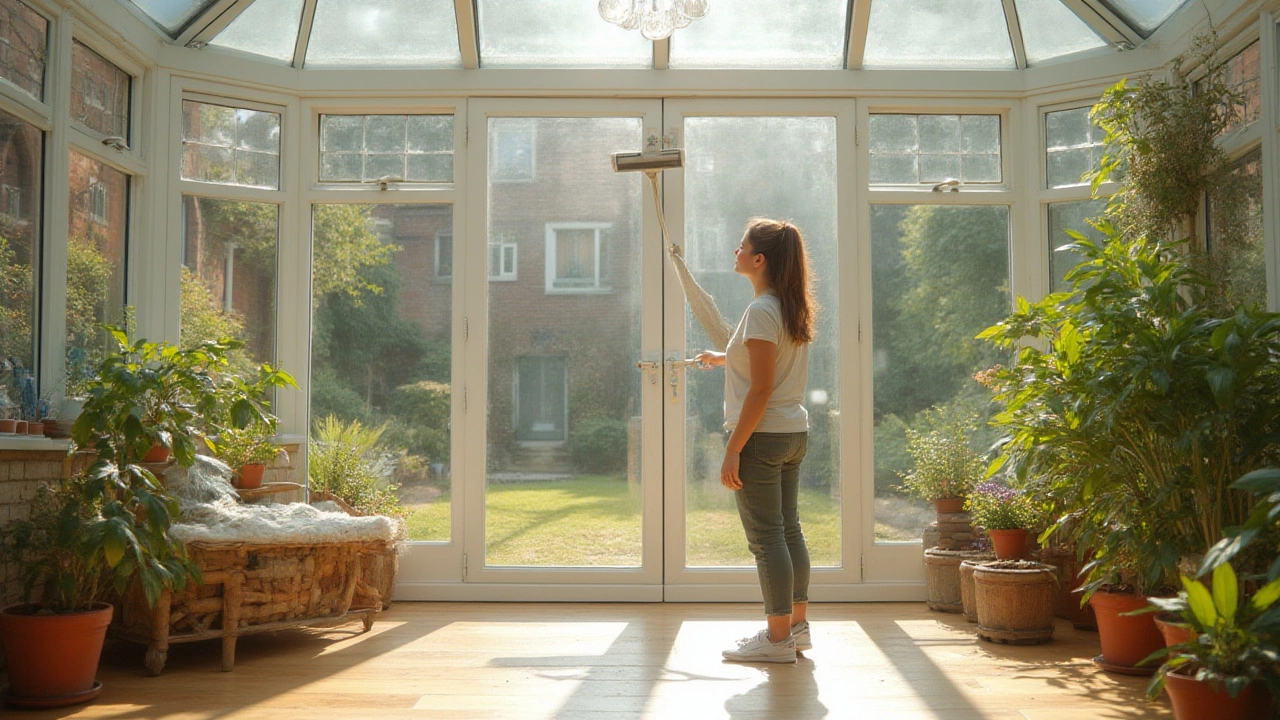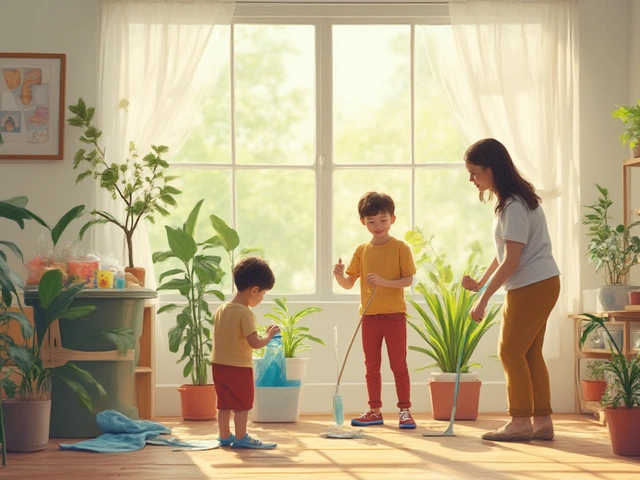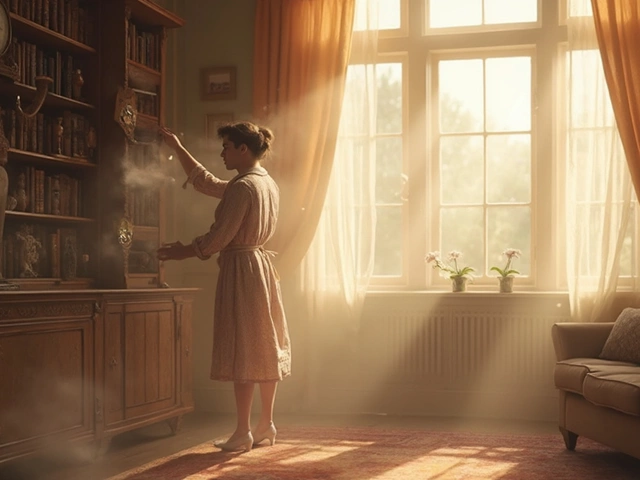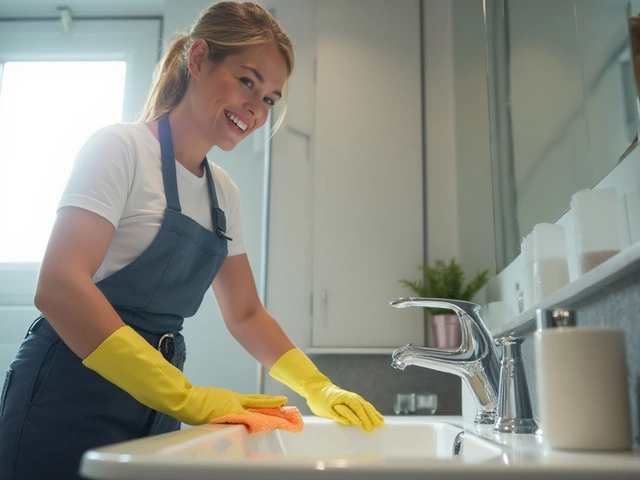You might be surprised how many people secretly cringe when sunlight pours through their windows—only because all those fingerprints, haze, and water spots become blindingly obvious. Dirty glass can dull any room fast. Some folks throw up their hands and shell out for a costly pro, convinced home tricks don’t work. Guess what? You don’t need a bulk order of specialty sprays or an industrial squeegee. Getting a streak-free shine from your windows at home isn’t rocket science. But there’s a big difference between just wiping glass and doing it right. Let’s break down what actually works and what just spreads the grime around.
Why Clean Windows Make a Difference
Crystal clear windows don’t just look good—they shape your mood and the feel of your space. According to a study by the UK’s Chartered Institute of Building, natural daylight improves concentration, happiness, and even productivity. Dirty windows cut daylight by up to 40%, said a 2023 survey from EcoWindow. That’s kind of wild—just letting grime build up makes your home darker, and your energy bill could even nudge up if you’re blasting more lights during the day. That’s not all. Dust and pollen trapped on window glass can cycle into your home’s air. Family members with allergies or asthma might notice they’re sneezing more when those spots are ignored. And if you rent? Regular window cleaning could be in your lease. Many landlords check it before move-out and withhold part of the deposit if the glass is grubby.
Clean windows say a lot about how you take care of your place, too. When my wife Rachel and I first showed our apartment to friends, the one thing everyone mentioned—besides the dog—was how much the sunlight made the space feel open and bright. All from a few minutes with the right tools. Whether you want to impress visitors, keep your family healthier, or just boost your own mood on gloomy mornings, clear windows are an easy win. The best part? You can pull this off without fancy tech or breaking the bank.
The Science Behind Streaks and Smudges
Here’s where most people run into trouble: streaks. You might spend twenty minutes scrubbing, then step back and notice ugly lines glaring back at you. Why is it so hard to get glass shiny without those frustrating marks? It’s all about how water, dirt, and cleaning agents interact. Plain tap water can leave mineral deposits behind, especially if your city’s water is “hard” with lots of calcium. If the cleaner you use has too much soap or isn’t wiped completely, it dries into sticky residue—that’s what you see when sunlight shows off every swipe.
Paper towels? Don’t trust them. Studies (like one from Consumer Reports) show they tend to leave lint and don’t absorb streaky water evenly. Old newspaper, a favorite for decades, can work but sometimes leaves ink marks if your hands are damp. Microfiber cloths, on the other hand, really do have a science edge. Their super-fine fibers grab dust, oil, and water without just moving messes around. And here’s a good tip: always use two cloths, one wet for washing and a perfectly dry one for buffing. This “two-rag” system is what pros use, and it beats spreading gunk back and forth by reusing the same towel for everything.
If you look at ads, you might think you need a special bottle for every type of grime—bugs, smudges, hard water. But the reality is, most window messes break down with the same simple chemistry: lift it, dissolve it, and wipe it away before it dries. That’s why the best home solution usually isn’t the fanciest (or most expensive) one. You just need the right process.
Top Home Solutions: Formula Showdown
Okay, let’s talk ingredients. What should you reach for under your kitchen sink? The big winner for home use is a mixture of vinegar and water. It works because vinegar cuts grease and helps dissolve limescale, all without harsh fumes. Here’s the classic recipe that’s been passed down and is still loved in 2025:
- Mix equal parts distilled white vinegar and water in a spray bottle (distilled is key, since tap water streaks—use bottled water if your tap is hard).
- Add a drop or two of dish soap if your windows are extra grimy.
- Shake gently to blend. Use within a week for best results.
Why not just use commercial sprays? Many work fine, but most are just glorified versions of that water-vinegar mix, sometimes with a bit of ammonia for tougher grime. But these can irritate if you’re sensitive to chemicals. If eco-friendliness matters to you, skip the blue dye and stick with vinegar—it’s safe for pets, too. If you absolutely hate the vinegar smell, lemon juice has a similar acid effect (use about a quarter cup in a quart of water) and smells fresher, but you’ll need to rinse a little more thoroughly because of the sugar content.
Let’s compare the most common home strategies:
| Solution | Ingredients | Cost | Effectiveness | Notes |
|---|---|---|---|---|
| Vinegar + Water | 50% distilled vinegar, 50% distilled water | Low | High | Cheap, quick; avoid on natural stone sills |
| Commercial Glass Cleaner | Isopropyl alcohol, ammonia, detergents | Medium | High | Works fast but can irritate skin/noses |
| Lemon Juice + Water | Fresh lemon juice, water | Low/Medium | Moderate | Smells great, but can attract ants if not rinsed |
| Straight Water | Filtered/distilled water | Low | Low | Okay for light dust, useless on smudges |
There’s no need for harsh chemicals here. Once you’ve picked your cleaner, the method matters just as much. Avoid cleaning on blazing hot sunny days. Heat dries the solution too fast, making streaks almost guaranteed. Early morning or after dinner when it’s cooler is perfect for this job.
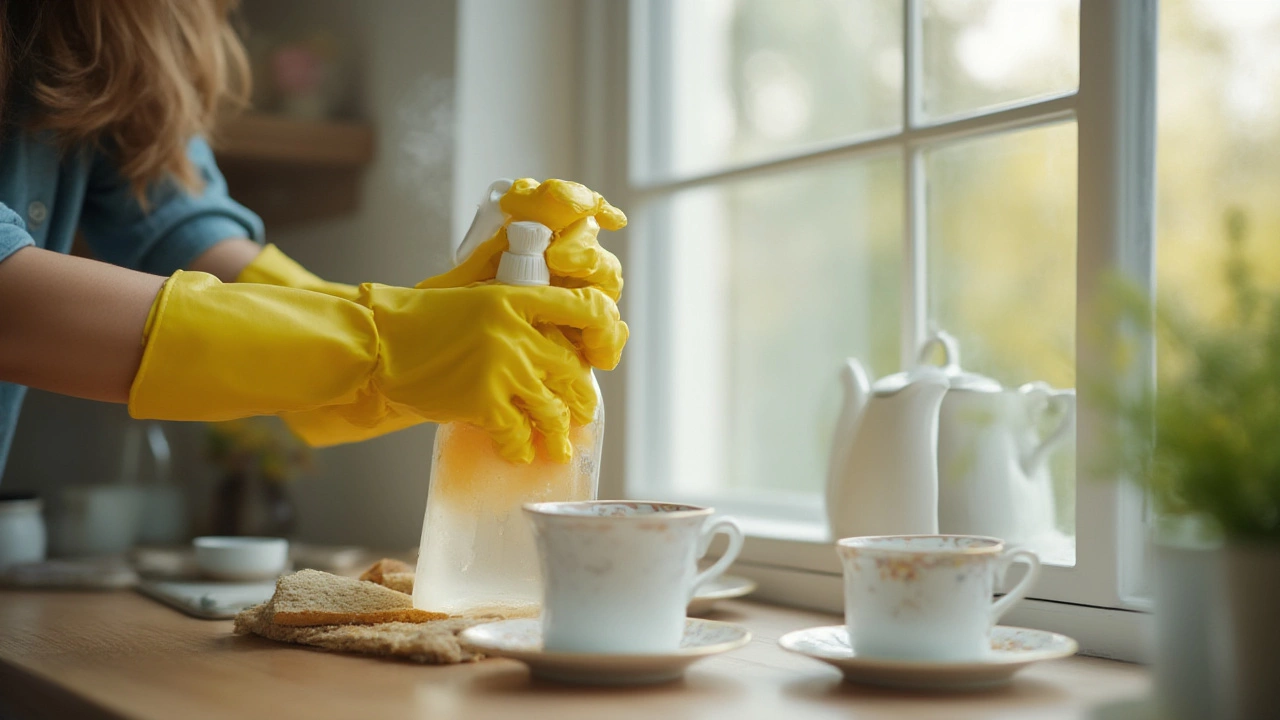
Tools and Techniques for the Perfect Finish
Ever watch a window cleaner at work and wonder why their glass always looks better? They’re not doing magic. It’s about tools and the right moves. Squeegees are the pro’s favorite for a reason. With a sharp rubber edge, a squeegee pulls water and dirt down in one swipe, leaving nothing behind. Even a small, cheap squeegee beats wiping endlessly with a cloth. For best results, start at the top corner and pull down in a single motion, drying the blade after each pass. This stops drips from running over clean areas and making fresh marks.
Don’t have a squeegee? No stress. Just use two separate microfiber cloths—seriously, put one aside and promise yourself you’ll only use it dry. Spray a generous layer of cleaner, scrub with your damp rag, then immediately switch to the dry cloth for buffing. Use a zigzag pattern, not circles, to avoid visible smears. Pay special attention to window edges where grime likes to hide and sneak back onto your clean glass.
One thing most people miss: window screens can quietly sabotage your efforts. If the screen’s dirty, every time you open a window, you’re blowing dust across your newly cleaned glass. Pop those screens out once or twice a year and rinse with soapy water and a soft brush. Let them air dry outdoors before putting them back.
Heavily soiled window tracks? Those can gunge up fast, especially after a rainy spring. If yours are full of crud, use an old toothbrush and a little baking soda-vinegar paste to fizz out the gunk, then wipe clean. Some folks run a vacuum nozzle along the tracks first, which can save effort if there’s a lot of debris packed in the corners.
One more pro tip: always finish by checking your work from a few different angles. Smudges love to hide until the light shifts. Take an extra minute to scan for missed spots—and fix them before putting away supplies. Spot cleaning now is a lot simpler than kicking yourself later when a guest points out a stubborn fingerprint.
Troubleshooting: When Things Don’t Go as Planned
Even seasoned window-cleaning fans hit snags now and then. Sometimes you’ll find greasy fingerprints that just won’t budge. In that case, dab a little rubbing alcohol on your cloth and gently rub the mark away before using your main cleaner. Hard water spots (those white, chalky rings) can drive you nuts. For stubborn cases, soak a cloth in straight vinegar and press it against the spot for five minutes, then scrub and rinse. If the marks still won’t budge, pick up a bottle of commercial “hard water stain remover”—but double-check it’s safe for glass, not just tile or stone.
Streaks happening no matter what? Double-check your steps. Are you using tap water? Try distilled. Did you forget to dry with a separate cloth? Are you cleaning on a hot, sunny day? Fixing the process almost always solves the problem. For tall or hard-to-reach windows, use an extension pole with a squeegee or stick with cloths attached using rubber bands.
If you’re dealing with old double-pane windows that seem cloudy or foggy inside, that’s not a cleaning problem—you might have broken window seals. Unfortunately, home tricks can’t fix inner fog. That’s a job for replacement or repair pros.
Here’s a quick table to help out with common cleaning headaches:
| Problem | Likely Cause | Solution |
|---|---|---|
| Persistent Streaks | Mineral-rich tap water, too much soap, sunny timing | Switch to distilled water, less cleaner, wipe with dry cloth |
| Cloudy Glass | Condensation between panes | Seal failure; call window repair |
| Sticky Residue | Too much or wrong cleaner | Rinse glass, switch to diluted vinegar solution |
| Pet Smudges/Nose Prints | Oily streaks | Use rubbing alcohol first, then standard cleaning |
No method works if you rush. Set aside time, gather your gear, and work methodically. You don’t need to go overboard, just give yourself a real shot at seeing results. Sometimes, the difference is just a good second cloth.
Tips for Keeping Windows Clean Longer
Want to stretch out that fresh-clean look? Dust window sills and frames every couple of weeks, even if you skip the full scrub. That dust will otherwise blow onto the glass and muddy things up fast. Try to keep window screens clear—Rachel says a lint roller makes quick work on smaller screens without needing to haul them outside.
If you fry a lot of food or have pets, windows get cloudy faster. Keep a spray bottle of your homemade vinegar cleaner handy for quick touch-ups. Light daily maintenance goes way further than a massive deep clean every six months. Hate the smell? Add a slice of lemon peel to your vinegar bottle. It’ll mellow things out, and the freshness lingers without streaking.
Consider investing in quality tools. Reusable microfiber cloths cost more up front but last for years and don’t pile onto your paper waste. A $10 squeegee pays for itself after one deep clean, especially on bigger panes or glass doors.
Sometimes, if you want your windows to truly sparkle for a holiday or party, a drop of isopropyl alcohol (rubbing alcohol) in your cleaning mix shaves drying time and boosts shine. Just don’t use it daily—it’s powerful and can dry out rubber window seals with overtime use.
There’s a myth you need fancy tech or pro help. Not true. The best window cleaning solution is likely already in your kitchen—vinegar, water, and a little know-how. Streak-free glass isn’t about gadgets, it’s about a smart process and honest elbow grease. You’ll see the difference next time sunlight streams through and you realize you’re not squinting at finger marks or haze. It just feels better.
